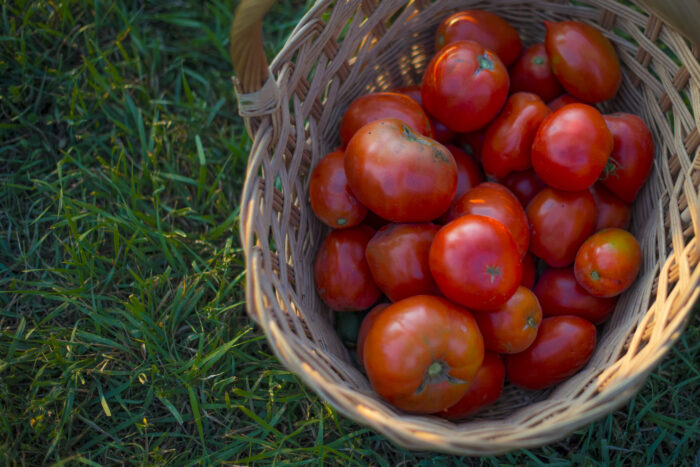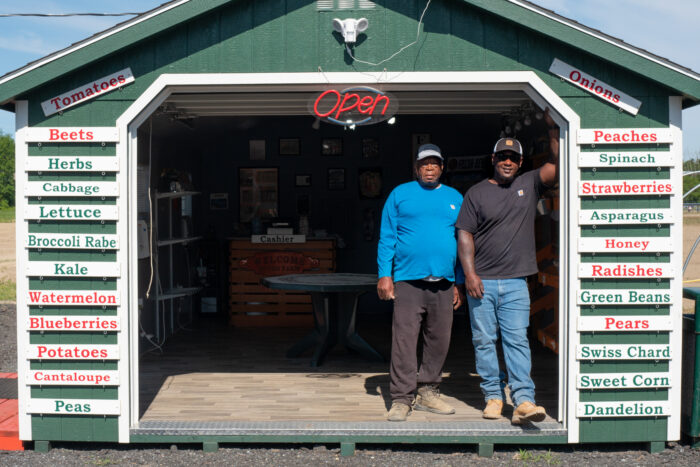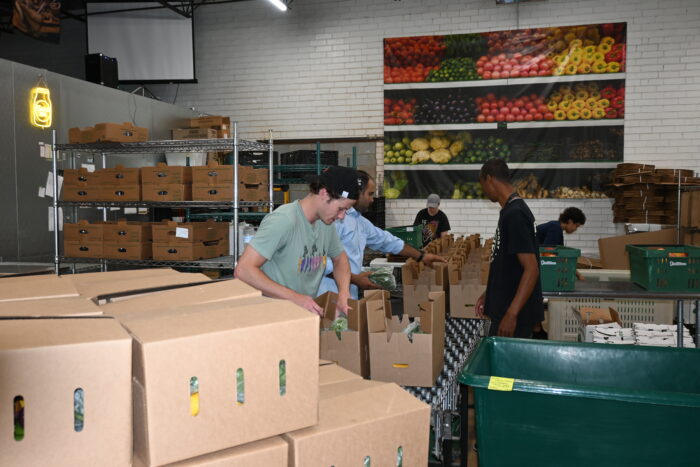
Editor’s Note: This blog post is the third in a series taking a deeper look at how federal market opportunities support the success of efficient regional food systems. Part one details USDA’s recent supply chain infrastructure investments and how they have equipped regional processors and distributors. Part two describes the essential role that community partners and people play in connecting producers to markets.
As described in the first part of this series, the US Department of Agriculture (USDA) launched a framework and series of investments targeting regional supply chains to promote a more fair, competitive, and resilient food system. These investments focus on production, processing, aggregation/distribution, market opportunities, and consumer access.
Each year, USDA spends billions purchasing food for schools, food pantries, and community nutrition programs across rural and urban settings. The USDA’s purchases are sourced from American producers and businesses, and all contracts are awarded on a competitive basis. However, the scale and specifications of the contracts can often prevent businesses from being competitive.
For example, contracts often require the business to serve a large geographic footprint, sometimes as large as an entire region of the country. They can require specifications to stock all staple food items, such as dairy, eggs, meat, and produce, or require sizable quantities of a singular item. USDA’s latest records of contracts by vendors show that 7 million pounds of potatoes have been sourced from just one vendor in 2024. Due to the requirements of these contracts, it is extremely difficult for small-scale, locally-focused food hubs, farmers, ranchers, or processors to participate in USDA’s food procurement programs. Recent research published by the Federal Good Food Purchasing Coalition highlights how these structures lead to the concentration of USDA food spending. While the top 25 vendors only represent 8% of the total number of vendors that USDA purchased from in 2022, the value of their contracts represented nearly half of all food spending. This concentration is better highlighted within poultry purchases. Contracts with Tyson Foods accounted for 42.5% of all USDA’s poultry purchases. This reality resulted in renewed attention to ensuring fair and competitive markets. Specifically, recent supply chain investments are building regional networks of producers, processors, and distributors that can interrupt this concentrated spending.

Stories From the Field
Producers Have an Appetite for a Local Meat Economy
Since 2022, USDA has invested roughly $ 500 million in loans and grants to small and midsize meat processing operations to enable them to expand their processing capacity, provide specialized workforce training to employees, or support food safety compliance to increase market access. These investments were made, in large part, to address the fragility of the meat industry exposed during the COVID-19 pandemic, but they will also enable efficient regional supply chain operations that can accommodate a range of business sizes. However, a number of investments remained largely focused on larger operations rather than focusing on meeting a critical need for small (under 500 employees) and very small (under 10 employees) processors.
Concentrating resources and spending in large meat processing operations, as demonstrated by USDA purchasing, creates a gap that local economies are ready to meet. This is the argument that Julia Van Loon of Slate Foods in New York State makes. Julia is a beef producer who purchases cattle directly from ranchers (not auctions) and further processes the beef into many value–added products for institutional and retail markets locally.
“There is no reason why New York could not feed its own people; instead of, for example, giving contracts to large producers like Cargill who purchases cattle with New York ear tags, that are then slaughtered and deboned in Pennsylvania, turned to hamburger, sold to Tyson Foods, and then sent to one of several breadline distributors for further distribution,” explains Van Loon.
According to Van Loon, recent investments have generated an increase in production in the state but processing capacity for smaller and custom slaughter operations has not scaled at the same rate. While New York State has provided support by purchasing from socially disadvantaged farmers, there is insufficient support for slaughter, processing, or food safety certification.
“I have no desire to sell at the federal level if I’m going to continue to support a regional network. I am not at that size and I don’t want to be. That is why we need more of a regional processor to support our local economy,” Van Loon said.
Regional Solutions: Recent USDA Program Success Makes a Case for Regional Procurement
USDA food purchasing programs can offer the stable market that producers need to invest in their farms. To stabilize and strengthen local markets, USDA launched the Local Food Purchase Assistance Program (LFPA) in 2021 to decentralize federal food procurement efforts while strengthening state and regional food supply chains. What differentiates this program from other USDA food purchasing programs is that USDA enters into cooperative agreements with States, Tribal nations, and territories to purchase and distribute locally produced foods on behalf of USDA. As a result, contracts with producers are often smaller and easier for them to fulfill. The purchases benefit food insecure communities, but the program remains primarily focused on purchasing from underserved and disadvantaged producers who have historically been left out of traditional markets, such as Slate Foods.
As a result of this investment, thousands of farmers and ranchers at diverse scales have provided more than $ 220 million worth of high quality foods to their communities. Moreover, the success of these local supply chains has demonstrated how this approach offers an effective alternative to traditional USDA purchasing.
LFPA has had such success that Congressional leaders and stakeholders nationwide urged Secretary Vilsack to continue its funding. USDA recognized the potential of this program and recently announced an additional $ 500 million of program funding.
As there is more certainty around the future of LFPA, two case studies highlight the needs of two organizations that have been dedicated to the program’s implementation.

The Common Market is a food hub that participates in LFPA in Georgia, New Jersey, and Texas by procuring protein and produce from farmers. They prioritize purchasing from farmers who fall under the USDA’s definition of “socially disadvantaged,” with a focus on those who identify as Black, Indigenous, persons of color, and women.
In a conversation with the National Sustainable Agriculture Coalition (NSAC) in Fall 2023, co-founder Haile Johnston described how, by participating in LFPA, The Common Market has been able to get high quality food to food insecure families through the food bank network.
Additionally, this arrangement has allowed many producers to expand their markets. For example, most of the farms that partnered with The Common Market in Georgia had little to no prior experience selling to institutions, such as schools, colleges, hospitals, and corporate cafeterias. Similarly, in New Jersey, nearly all of the socially disadvantaged farmers and ranchers that The Common Market worked with through LFPA contracts were working with institutional markets for the first time.
According to Johnston, The Common Market is able to facilitate these new connections because they have experience working at both ends: they help newer producers learn how to prepare, package, and price their products, and they encourage institutions to source more of their produce from those farmers participating in LFPA. This has enabled The Common Market to contract with growers and provide reliable income upfront that farmers could use to expand their businesses.

Similarly, Freshlist, a food hub serving the Carolinas, has used its LFPA funding to meet farmers where they are and help them grow their businesses. In a recent conversation with NSAC, Erin Bradley, Freshlist’s Director of Business Development, shared about the positive impact of LFPA purchases on producers.
“A huge part of the success story that has been the LFPA program was smaller, more community focused food hubs and organizations being able to participate in the program. The participation of these smaller groups allowed food to be more targeted to community needs and dietary preferences cutting down on food waste and travel time. It also allowed smaller organizations to grow with federal funding that typically would not be available to them. These community food hubs were able to work quickly and efficiently to bring smaller scale producers into the program, extending federal funding to a part of the farming population that also does not typically see federal subsidies. The administration funds included in the initial round of the LFPA made that possible.”
At the beginning of October, farmers, businesses, and organizations nationwide sighed with relief at the recent announcement of additional program funding. However, the latest funding comes from the Credit Commodity Corporation, which includes restrictions on administrative funding that could impede the implementation of the program.
“Without the administration funds, this program runs the risk of only being accessible to larger groups with large corporate fundraising arms that can cover their own administration fees. That’s going to leave behind these smaller community organizations that have made this program so successful,” said Erin.
Incorporating These Learnings
USDA’s Commodity Procurement Program’s goal is to support American agriculture; however, research and NSAC member experiences demonstrate how their programs can go further. Federal food purchasing programs can offer a reliable market that catalyzes new business development and promotes farm viability among small-scale, highly diversified, and organic farmers.
The next farm bill offers a path toward leveraging the increased processing and distribution infrastructure and the demonstrated capacity for effective regional food supply chains. Currently, there are several marker bills that outline approaches for codifying pilot initiatives and integrating their learnings into broader USDA procurement.
- The Expanding Access to Local Foods Act of 2024 (S. 3982) would create a permanent program that enables States, Tribes, and territories to purchase food from local, regional, and underserved producers to distribute to community organizations, modeled off of LFPA. If incorporated in the Farm Bill, USDA’s Commodity Procurement Program would be able to use localities as purchasing partners.
- The Strengthening Local Meat Economies Act (S.2792) would create increased competition among meat processors that participate in USDA commodity programs. The bill would direct USDA to purchase at least 20% of their meat from small and very small meat processors, like Slate Foods. The result could generate significant market growth in local meat economies.
- The EFFECTIVE Food Procurement Act (S.3390) incorporates values into the entirety of USDA’s food purchasing programs. USDA would incorporate stated values as they relate to racial equity, climate impact, local economies, and worker and animal welfare into a pilot purchasing program. This program would provide grants and technical assistance and award contracts to values-aligned producers and businesses.
These initiatives have yielded meaningful, impactful results in communities nationwide. In the next farm bill, Congress has an opportunity to build on these successes and ensure USDA’s food purchases strengthen regional supply chains, promote economic development in rural communities, and increase the consumption of high quality, locally sourced foods.
The post A Regional Approach Creates Fairer Competition appeared first on National Sustainable Agriculture Coalition.